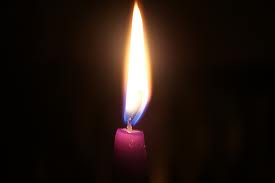Although we don’t hear it very often, those of my generation and older will be familiar with the phrase, ‘a mystery of faith’. Often times, that phrase was a response to questions we posed as children to our parents…’how does the Holy Trinity work?’ …’how does transubstantiation happen?’…’how does God become a little baby?’ – and the reply that might come was, ‘well, that’s a mystery of faith’. Somehow that answer seemed sufficient as small children, but as we grew into adolescents (and at that stage we ‘knew’ everything anyway) that answer didn’t really satisfy us. We equated ‘mystery’ with ‘I don’t know’ or ‘there is no answer’ or even ‘go ask your mother/father’.
But mystery, particularly a mystery of faith, is a concept that seems all too lost on a culture that demands instant gratification and brief, direct answers to complex questions. In its truest sense, mystery can be understood and resolved to a certain point, but never completely.
Mystery doesn’t mean we don’t understand anything. It means we don’t understand everything, and there is a world of difference between the two.
I highly doubt any scientist or researcher would claim to know everything about the workings of the universe, physics, the human body, etc. Yet the word ‘mystery’ seems never to be associated to our still limited advances in scientific discovery. Because a scientist admits he or she doesn’t know everything about the universe, we don’t discount the entire universe as a myth. Without using the same words, we accept that there is always more to discover.
I’ve often thought of a mystery of faith as being akin to visiting a place like a large metropolitan art museum. A visitor can see many and varied pieces of artwork just in the lobby alone. But if one enters into that museum, they soon realize that the building has halls; and off of these halls other halls; and off of these halls many rooms; and in each room paintings and sculptures and other various media to view, appreciate, and study. To completely ‘soak in’ each piece of art in a day or brief period of time would be nearly impossible. The deeper one goes into the museum, one realizes how much more there is beyond the lobby.
If the visitor were a serious student of art, and made the study of one painting their entire life’s work – let’s say Leonardo’s ‘Mona Lisa’ – they might set out to attempt to make a complete and true copy. They may use the same techniques as they have studied, even down to mixing their own pigments, and choosing the construction of their brushes as Leonardo did – duplicating every little stage in exact detail. They may be such an accomplished artist in their own right, that to anyone who didn’t know, their copy might be completely indistinguishable from the original.
But they will never know the complete experience: they will never truly know what went through Leonardo’s mind and heart as he touched brush to canvas because they are not Leonardo. The experience and language spoken to his soul at that moment would be as unique to him as it would be to each individual human being.
There will always remain some mystery there – the student can’t know ‘everything’ – but it doesn’t mean they don’t know anything.
We are just entering into the season of Advent. This is a time of joyful waiting, of hopeful expectation as we prepare to celebrate the great Mystery of the Incarnation – of God entering into our humanity in the person of Jesus. This is a perfect time to reacquaint ourselves with that sense, in humility, of child-like wonder at that which is beyond our own understanding.
It’s a perfect time to admit that we don’t know ‘everything’ about God’s love and mercy – and to be ‘okay’ with that. That unlike small children, or resistant adolescents, we can maturely accept that we are ready to have that sense of mystery return to our lives; that we don’t need to know or control ‘everything’ – that God will respond to us in the measure we are open to that response.
That we will be open to delving more deeply into the mystery of that relationship.

Praised be Jesus Christ, now and forever!


